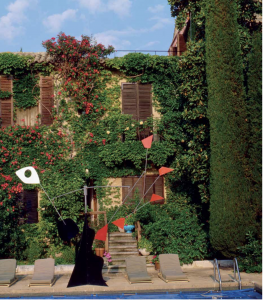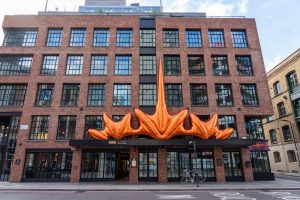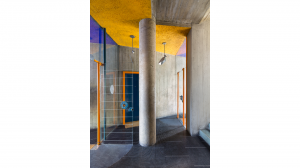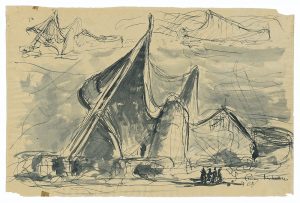Axel Vervoordt redesigns the Palais Keller at Hotel Bayerischer Hof

“I never do hotels,” was Axel Vervoordt’s answer to Innegrit Volkhardt, when the owner of the Hotel Bayerischer Hof, Munich, approached the interior designer and art collector about a partnership.
It might have taken Volkhardt two years to convince Vervoodt to make an exception, but it was worth it; the relationship – and friendship – between hotelier and designer has now spanned 12 years and six design projects, including both the hotel’s north and south wings, the ultra-luxe Penthouse Garden Suite, and Atelier, Munich’s only three Michelin-star restaurant. Only one other hotel in the world can boast of having Vervoodt-designed rooms, and that’s Robert De Niro’s Greenwich Hotel in Manhattan with its Tribeca Penthouse Suite.
Now, Vervoodt has returned for his latest project with Volkhardt, the refurbishment of the Palais Keller. Built back in 1443, this subterranean restaurant was originally used as a local salt warehouse, and passed through various hands before it was bought by Falk Volkhardt, Innegrit’s father, who also purchased building above, the Palais Montgelas. Volkhardt opened it as a Bavarian restaurant within the Hotel Bayerischer Hof in 1972, which is has remained as ever since. The idea to re-design the space first came to Innegrit back in 2016, although the Palais Keller didn’t shutter its doors until the April of 2019. But from this point, it took only six months to renovate, and for Volkhardt, there was never any question that the designer would be Vervoodt.
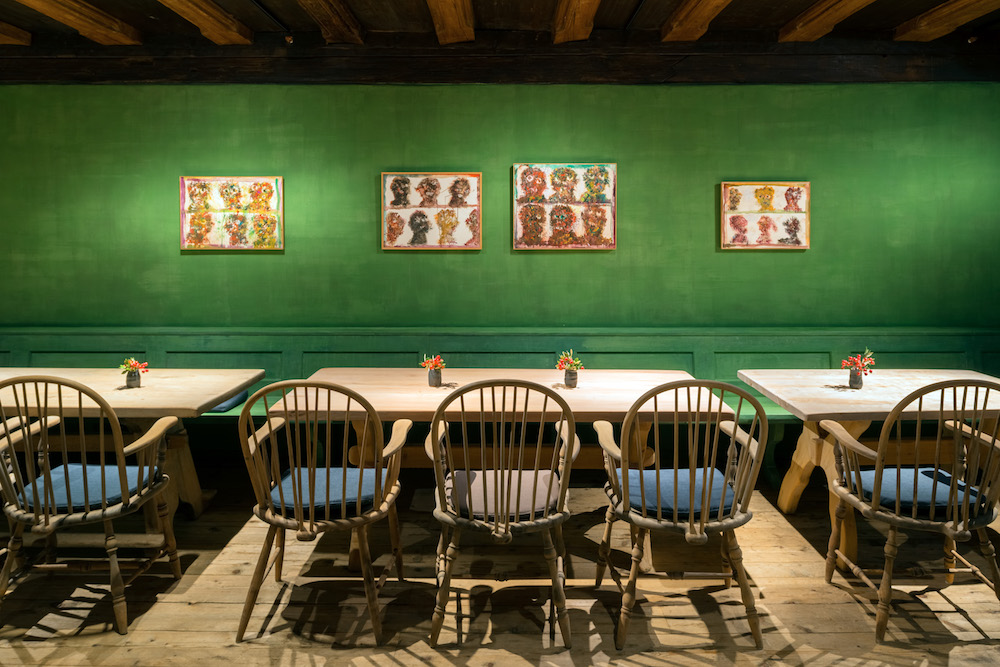
“For me, no other architect was worth considering, because for Axel Vervoordt and for me, the present is a mixture of the past and the future. Conserving it was far more than just a duty. Axel Vervoordt’s talent is his ability to unite the two so skilfully, and that is what he has done here, on this historic site; he has combined the old with the new.”
“We needed to restore the atmosphere as it was originally, with a monastic feel” explained Vervoodt during the unveiling, who has renovated the original lime mortar masonry of the restaurant’s signature design feature – a massive vaulted ceiling – back to its original condition.
“I loved the universal power of the exceptional 15th-century vaulted cellar,” said Vervoodt, “During the restoration, we attempted to unveil the essence of the fascinating existing architecture.”
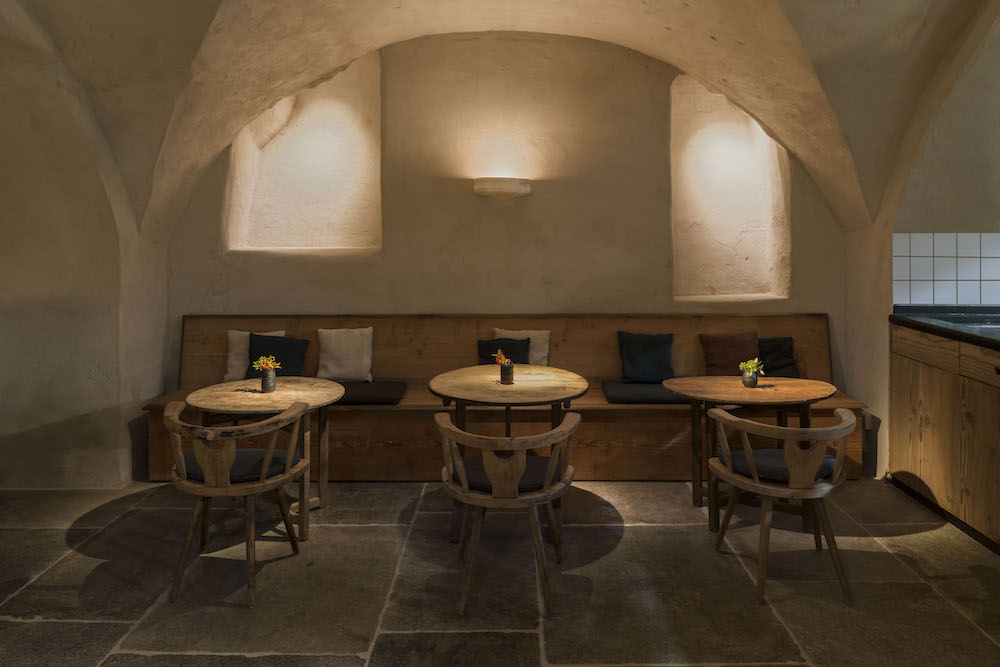
The designer has also finely balanced the old and new by applying his minimalist style to the project whilst using what was already available to him, notably the sturdy long dining table, a reclaimed piece made by Vervoodt from a fallen oak which had been lying in his own garden for 20 years. Artwork by Bosco Sodi, simply titled “Untitled”, sits at the end of the table with a colour and texture that almost mimics that of the arched ceiling. The flooring is made from 400-year old paving slabs from the streets of Turin, whilst other Italian details can be seen throughout the Palais Keller in the form of the antique, 18th-century wooden ceiling mounted in the entrance hall, and in the bathrooms, with rugged sinks crafted from Italian sandstone and carved doors constructed from heavy wooden planks sourced from Piedmont.
“Nowadays there is no room to throw things away. We cannot afford to do that,” warns Vervoodt. “In these current times, everything is very fake, very superficial. Everything here is very real.”
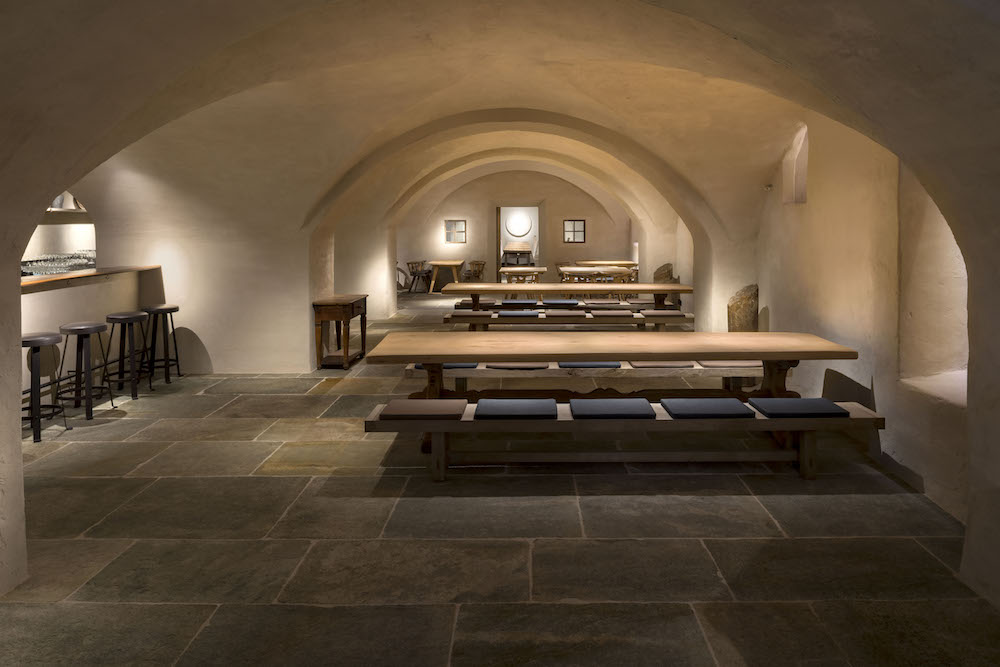
There is attention to detail on every level and yet the finished look Is incredibly pared-back, particularly in The Refectory. It’s this simplicity, with shades of beige and sparse furnishings crafted from existing materials, which gives the design such impact.
“I think the beauty of this is the timeless feeling. It’s almost futuristic,” said Vervoodt. “And it’s all built to be useful.”
In the Palais Parlour, another of the restaurant’s dining rooms, Axel again found inspiration from an object already in his possession, a painted panel which, although a little too blue, was the right starting point for the now green-hued walls. A coat of tempera, which is a mix of egg and oxidised copper, was applied to the newly restored wood paneling not only to achieve the desired shade, but so the finish will develop and age with the restaurant over the next century. Vervoodt, whose work is also heavily influenced by Japan and the philosophy of Wabi-Sabi (“They have a respect for everything: materials, nature, time, everything”) also selected works from Sadaharu Horio, Tsuyoshi Maekawa and Yuko Nasaka, as well as Italian artist Ida Barbarigo to complete the look.
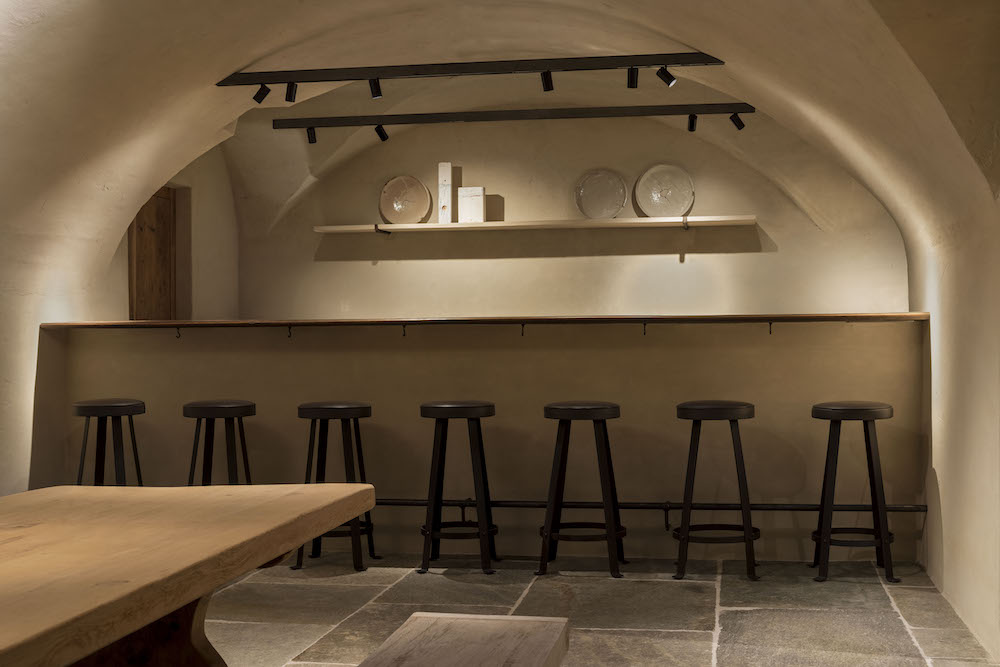
In complete contrast to the modernity of both The Refectory and The Palais Parlour is The Tyrolean Parlour, an original Austrian parlour inn dating back to 1823, which has been left just as it is, flaws and all. “See the beauty of it as it is,” said Vervoodt. “If we restored and varnished it all, it would look terrible.”
Axel’s wife, May, advised on all of the restaurant’s fabrics (note the ever so subtle but varied shades of white linen covering the restaurant seating) and also had a hand in the design of staff uniforms, imagined by designerClara Dorothea. These traditional costumes feel, just like the rest of the restaurant, utterly authentic, inspired by the classic shapes, think high-necked bodices, dirndl skirts and gentlemen’s Bavarian jackets, but cut with simple, pared-back lines for a more contemporary look. The colour palette is also understated, with muted shades olive, grey and white in a washed coarse linen that nods to the seat covers. And like Axel’s design of the restaurant itself, inspiration also comes from the past, with Clara Dorothea looking to drawings of 19th century waitresses in Munich beer gardens for her the ladies’ accessories; a small, tanned chamois leather bag worn at the waist to hold work essentials.
As for the menu, Volkhardt wanted the cuisine to retain its Bavarian roots, and so chef de cuisine Tobias Heinze stepped in to update, rather than overhaul, the traditional, hearty dishes. And in keeping with Axel’s vision for the restaurant’s decoration, Heinze also shines a light on sustainability, and retaining that balance between old and new.
“Most of the produce we use is farmed locally and we transform it into contemporary, yet typically expressive dishes, full of Bavarian flavour,” explains Heinze. “We use seasonal produce so that the menu has a current, fresh appeal.”
“Dishes such as Bavarian-style tarte flambée with raw ham, red onion marmalade, leeks, mountain cheese and cress; frothy horseradish soup with boiled fillet of beef, apple, mashed potato and chives or mini apple strudel with vanilla crème anglaise, raisin gelée and almond cream form a link between traditional and modern cuisine.”
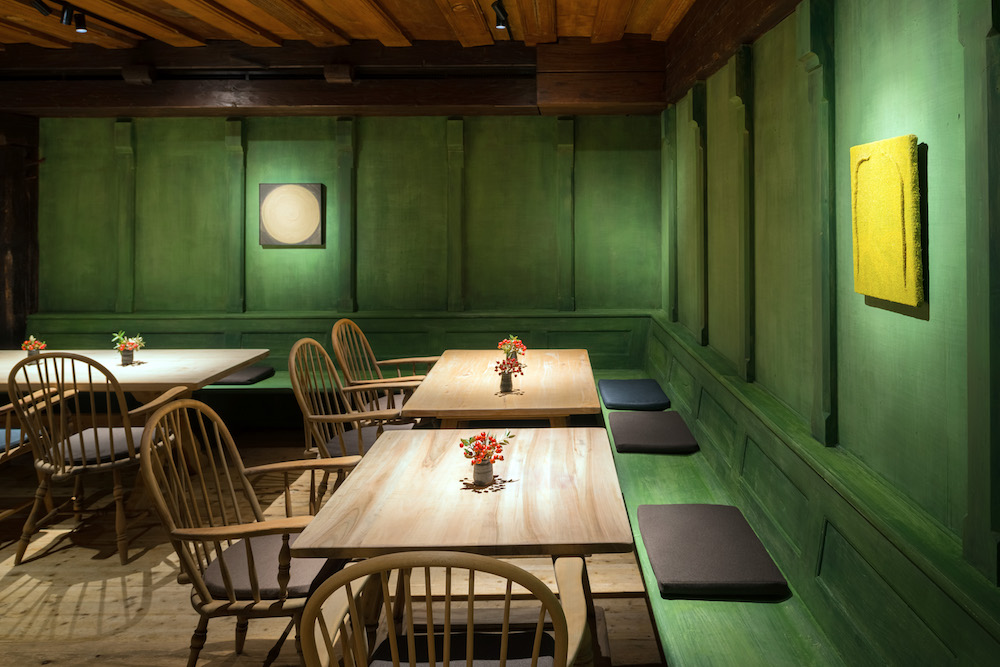
Photography Daniel Schvarcz
